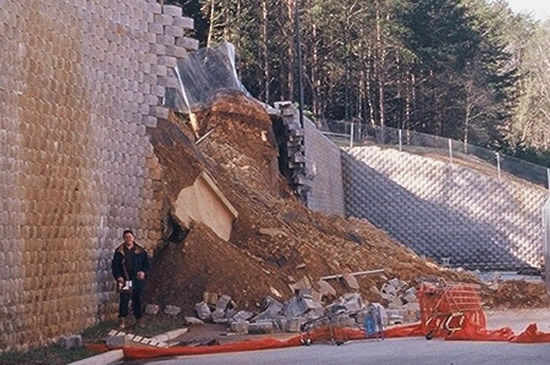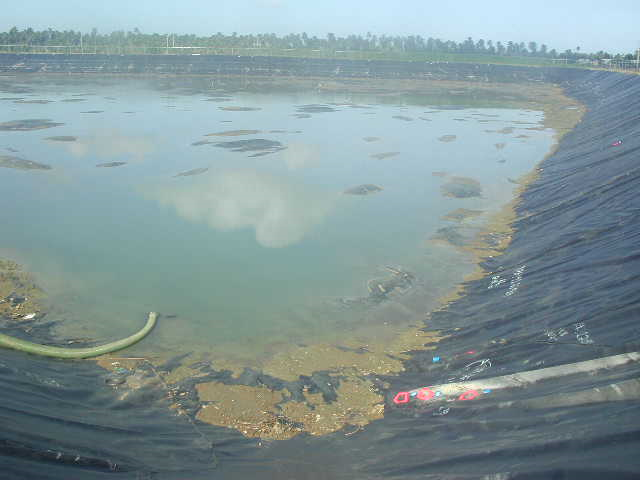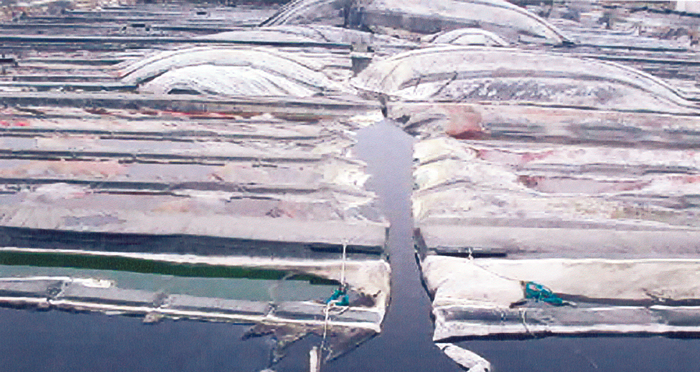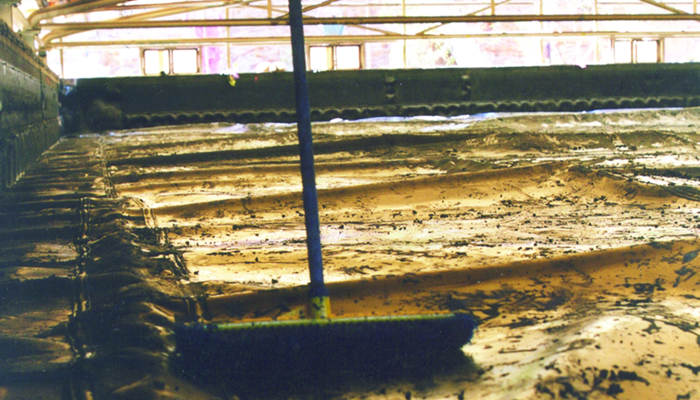In construction and engineering with geosynthetics, lower price is never a substitute for the value of experience. The cheap can come out quite expensive if you cut out experienced design, specification, installation, and/or CQA. Most preventative measures are low cost in and of themselves, and especially in regards to a typical geosynthetic project’s overall budget (in which the geosynthetic is often a small but essential piece of the investment).
In 2004, Geosynthetica was part of a white paper that sought to persuade the insurance risk management industry to help require experienced design and specification review for projects using geosynthetics, with a focus on applications involving containment and mechanically stabilized earth (MSE) wall reinforcement. The use of certified installers for geosynthetic containment projects was also emphasize. The program did not take off, but the effort remains meaningful.
RELATED: Was the Geosynthetics Risk Management Program Proposed Too Soon?
More than 95% of geosynthetic project failures analyzed by the white paper authors would have been prevented if expertise had been required (and which would not have cost insurers anything). Four failures were highlighted in the white paper for the Geosynthetics Risk Management Program.
These (preventable!) failures continue to tell the right story: trust and demand experience, especially in engineering and construction. Or, as the old adage instructs: an ounce of prevention is worth a pound of cure.
RETAINING WALL NEEDED EXPERT DESIGN REVIEW
A shopping center retaining wall failure cost $600,000 to repair. The site development
program required well over 1,000 feet of retaining wall, ranging in height from a few feet to over 22 feet. Geogrid reinforced segmental retaining walls were used. Shortly after the wall was completed, a section of the tallest portion collapsed during a rainstorm. More than 25% of the original structure had to be rebuilt.

Inappropriate design and specification was the cause. It could have been prevented with what was estimated as a $20,000 preventive review.
NOTE: The overall cost of repair does not include the losses incurred for legal negotiations and settlement by the involved parties and their insurance companies.
GOLF COURSE DEVELOPMENT NEEDED CERTIFIED INSTALLER
A golf course at a hotel development incurred a failure cost of $1.3 million for a 6.5-acre irrigation pond’s failure due to using low-cost, inexperienced labor, which was an inappropriate decision for the liner type and scale of construction.

A certified liner installer (who would have cost only $15,000 more initially for the $36,000,000 golf course development) could have prevented the problem. In the end, the experienced installer was hired—to reconstruct the pond properly after all of the failure costs had been realized.
ANAEROBIC DIGESTER GOT IT WRONG IN DESIGN, SPECIFICATION & INSTALLATION
Anaerobic digesters at a food processor’s wastewater treatment facility suffered leaks through the liners. The leaking wastewater reacted with the subgrade to form methane gas, which lifted the bottom liners from the floor of their lagoons. One failing bottom liner
lifted so much that it also lifted the floating cover. This resulted in extensive tears in the liner and catastrophic failure. In one case, a completely new lagoon had to be constructed. In the other facilities, the liners were torn out, redesigned, and replaced, with one of them resulting in the need for a temporary lagoon to be built for interim treatment of the plant’s wastewater. The costly, time-consuming ordeal produced more than $21,000,000 in failure-associated costs.

Was it preventative? YES. Poor design, improper specification of the liner material, and a less-experienced installer were the causes. By not seeking experience for this sensitive installation, the project saved approximately $40,000. The end cost to get the facility right, however, was more than 500 times greater.
RESOURCE (PDF): Underdrain Design for Geomembrane Lined Surface Impoundments to Avoid Whales/Hippos from Occurring
MINING OPERATION SUFFERED FROM POOR SPECIFICATION–NOT AN INSTALLER PROBLEM
The repeated failure of HDPE-liners in concrete solvent-containment tanks at a copper and uranium mine was initially blamed on poor installation practices. This was an understandable assumption, as the observable failure was the continual, rapid development of weld failures on the liner. The true cause, though, was improperly specified material. The specific geomembrane selected could not contain the type of solvent being used in the tank. It was the wrong liner for this situation.

At the time the 2004 risk management white paper was authored, the mining project’s failures and litigation costs had risen to nearly $23,000,000.
Not only did the project fail to insist on proper review of the design and specification, it also specifically decline to conduct chemical resistance testing that would have cost $10,000. The tests were recommended by the HDPE geomembrane manufacturer, but a project engineer insisted they were not necessary.
PREVENTABLE FAILURES
The four projects combined cost 17.9 times more to repair than the cost invested in the geosynthetics. Expertise matters. In all of these cases, peer-reviewed design and specification and the use of certified geosynthetics installation crews could have prevented the failures.












